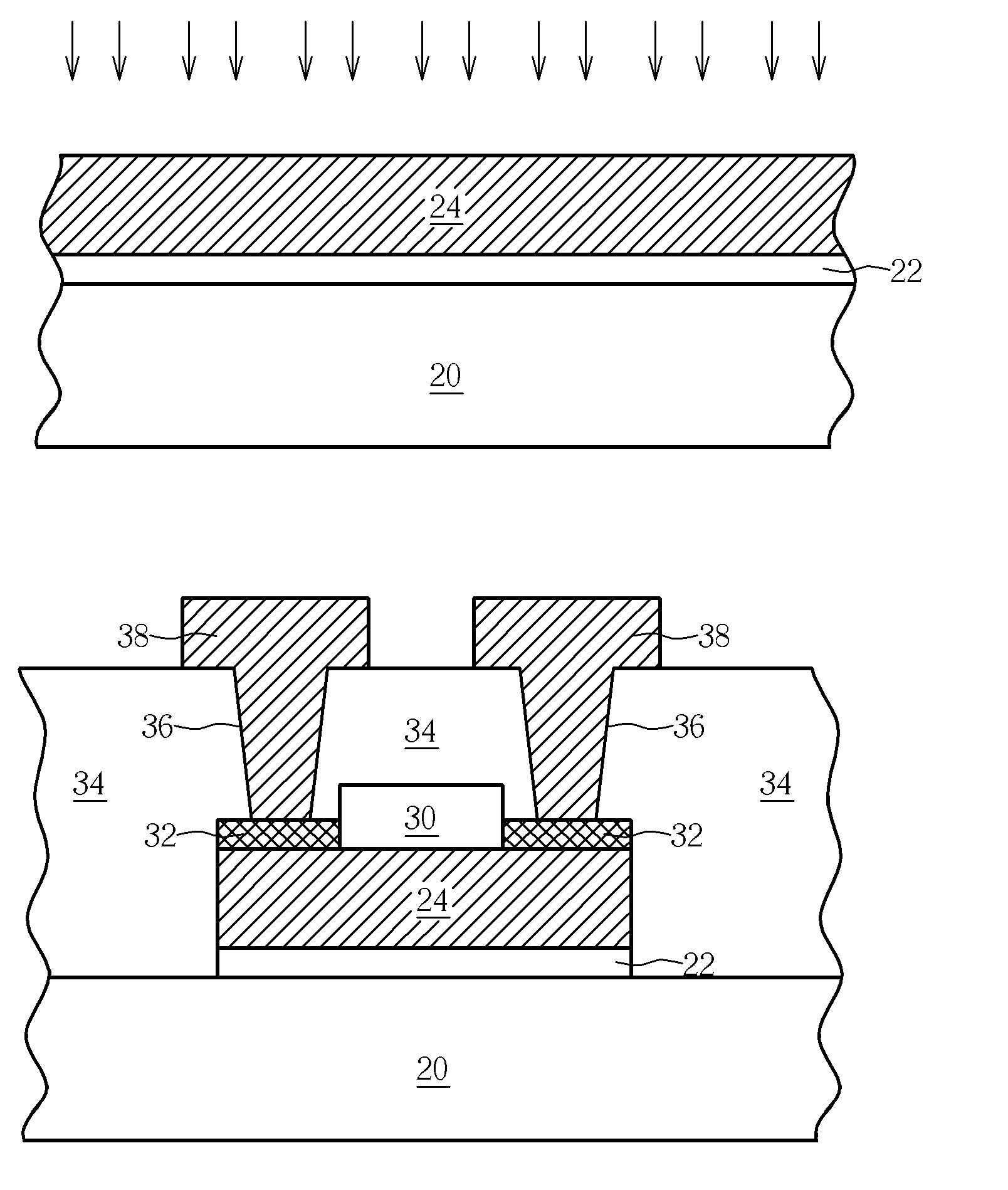Method of forming a polysilicon resistor
a polysilicon resistor and polysilicon technology, applied in resistors, electrical equipment, semiconductor devices, etc., can solve the problems of increasing complexity of circuit designs applying poysilicon resistors to replace load resistors, and achieve the effects of enhancing device integration, high resistance, and reducing the cross section area of polysilicon resistors
- Summary
- Abstract
- Description
- Claims
- Application Information
AI Technical Summary
Benefits of technology
Problems solved by technology
Method used
Image
Examples
Embodiment Construction
[0015] Referring to FIGS. 4-9, FIGS. 4-9 are schematic diagrams of a method of forming a polysilicon resistor according to the present invention. As shown in FIG. 4, a dielectric layer 22 and a polysilicon layer 24 are formed on a substrate 20, respectively. Following that, as shown in FIG. 5, an ion implantation process is performed using both of N-type dopants and P-type dopants to dope the polysilicon layer 24, thus adjusting the resistance of the polysilicon layer 24. In a better embodiment of the present invention, a dosage of the N-type dopants and a dosage of the P-type dopants have the same order of magnitude. For example, the N-type dopants can be As− ions with a dosage of approximate 3E15, and the P-type dopants can be BF2+ ions with a dosage of approximate 1.5E15. However, the present invention is not limited, other N-type dopants (such as P or Sb) and P-type dopants (such as Ge or B) having the same order of magnitude can also be applied in the present invention to adjus...
PUM
 Login to View More
Login to View More Abstract
Description
Claims
Application Information
 Login to View More
Login to View More - R&D
- Intellectual Property
- Life Sciences
- Materials
- Tech Scout
- Unparalleled Data Quality
- Higher Quality Content
- 60% Fewer Hallucinations
Browse by: Latest US Patents, China's latest patents, Technical Efficacy Thesaurus, Application Domain, Technology Topic, Popular Technical Reports.
© 2025 PatSnap. All rights reserved.Legal|Privacy policy|Modern Slavery Act Transparency Statement|Sitemap|About US| Contact US: help@patsnap.com



